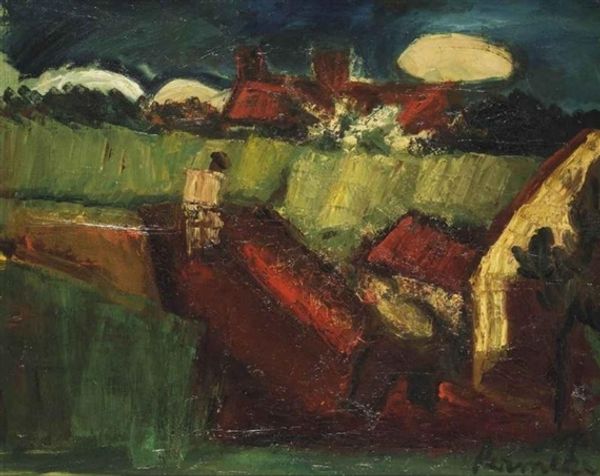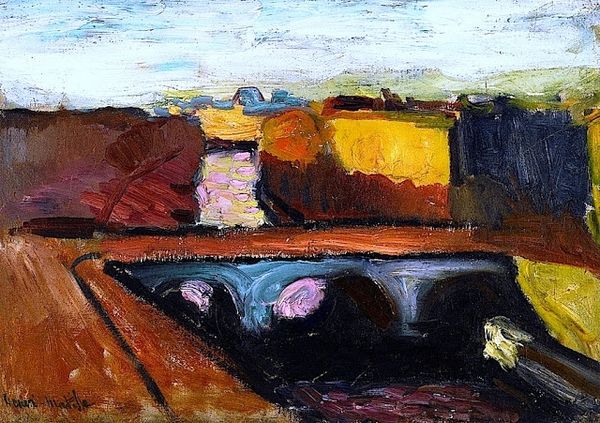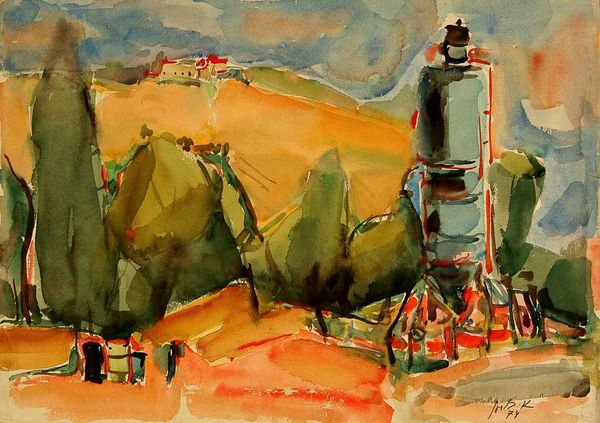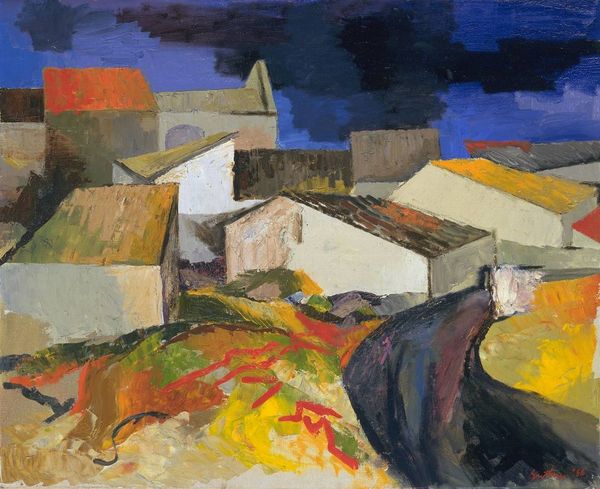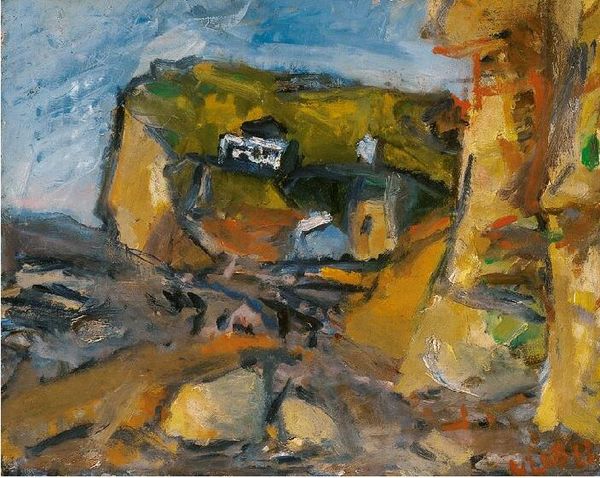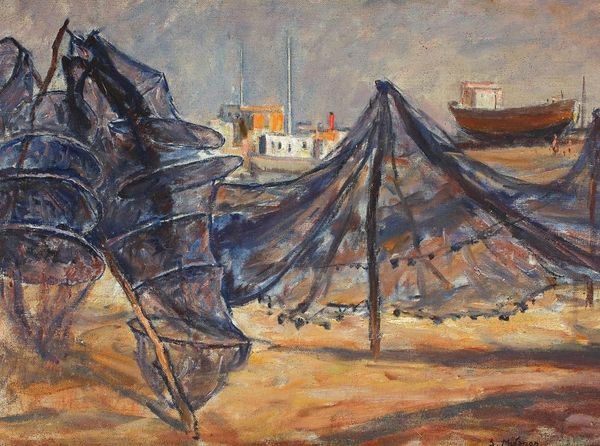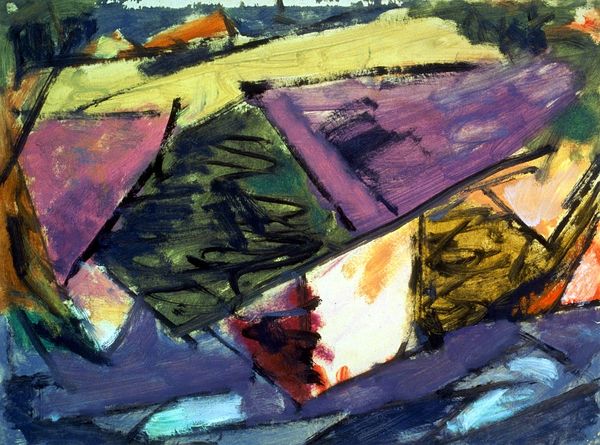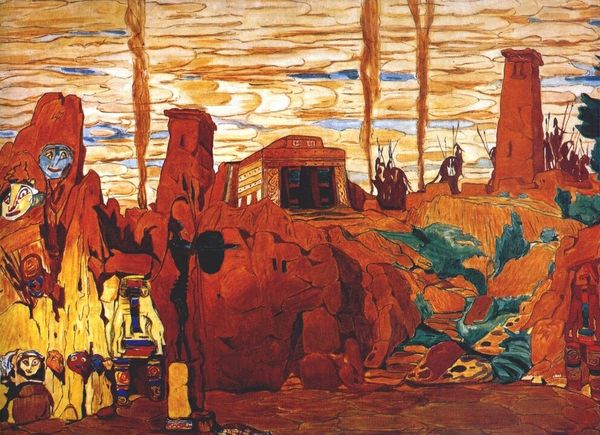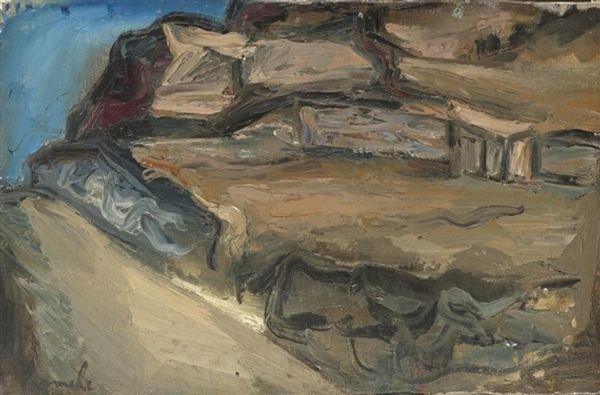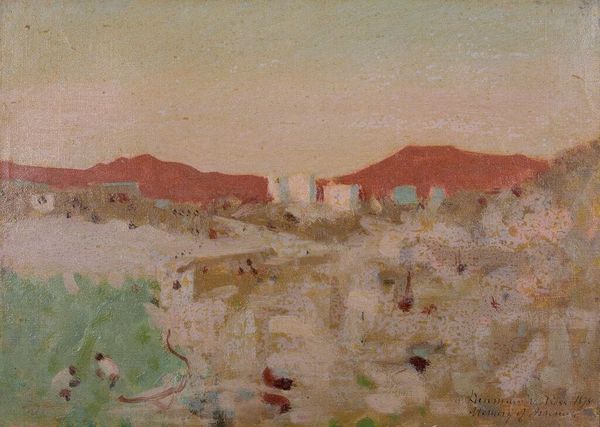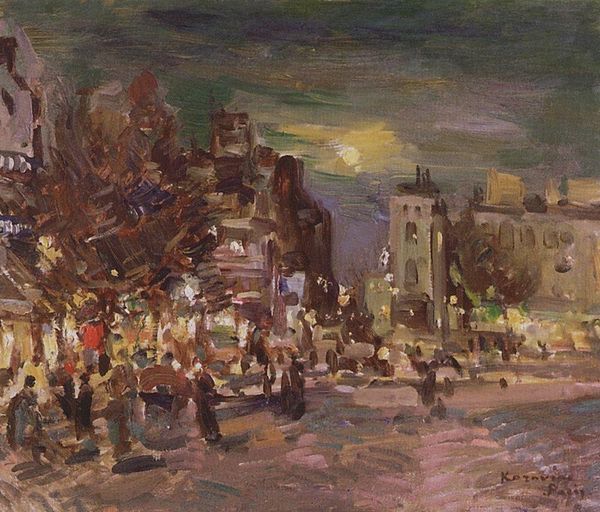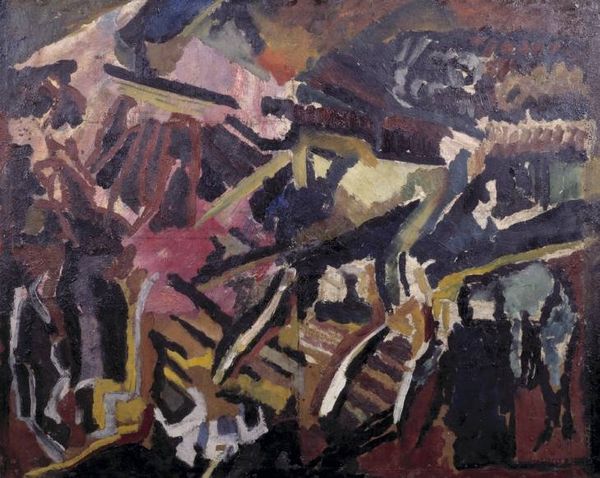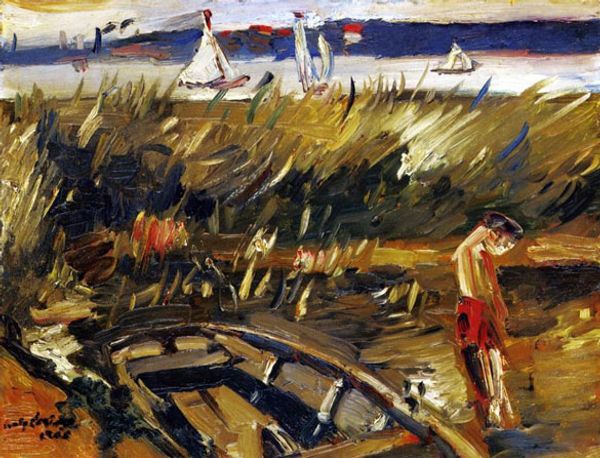
Copyright: Josef Herman,Fair Use
Curator: Looking at Josef Herman’s "Vineyards in the Autumn," painted in 1957, the earth tones immediately grab me. What’s your initial read? Editor: The colour palette is giving me sunset over parched earth. It feels…bleak, somehow. Like the end of something, with this rust coloured filter blanketing everything. Curator: Herman's known for his expressionist take on working-class life. Notice how the labourers, their bodies bent in labor, almost blend into the landscape? They become a part of this cycle of harvesting, connected through time and tradition. Editor: That’s a sharp observation. The figures, though rendered fairly simply, seem burdened, almost anonymous within the vastness of the vineyard. I get a feeling of solidarity and struggle intertwined, a collective destiny. Curator: Absolutely. The figures represent the universal archetype of the worker, timeless. The vineyards and their associated cyclical nature stand for cultural memory and ancestral belonging in agricultural communities. Editor: True, that barrel element evokes storing up something essential but it also makes me feel thirsty! Curator: (laughs) It’s funny you say that, because that's actually one of the potent symbolic attributes—linking effort to sustenance, to cultural inheritance. Think about how wine has been a signifier of ritual, social connection, even transformation, for millennia. Editor: Wow, yes it definitely lends depth to this painting! It reframes the emotional weight and offers a perspective on these workers tending this land, being both shaped by it and continuing this cycle into the future. It's both haunting and inspiring. Curator: And there we are. The push and pull between toil and cultural connection in a seemingly humble setting. Thanks for lending your unique perspectives! Editor: Thanks for always being able to add multiple symbolic layers to simple human acts! I learned a lot.
Comments
No comments
Be the first to comment and join the conversation on the ultimate creative platform.
